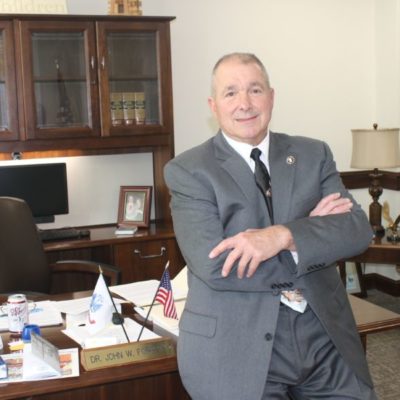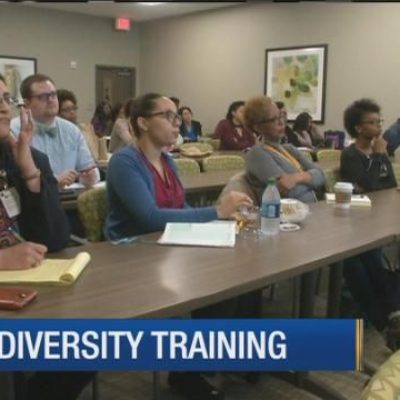Giving Rural Students ‘the Short Box’
SALT LAKE CITY — A student’s decision about where to apply to college can depend on what is in front of her, Jazmin Regalado said during a session at the National Association for College Admission Counseling’s recent annual meeting.
Regalado, a freshman biology and premed student at New Mexico State University, recounted her application process in high school. She is from Fort Sumner, N.M., which has about 1,000 residents and is best known as the burial site of the outlaw Billy the Kid. Growing up, her elementary, middle and high schools were all together.
One counselor is supposed to help seniors, but she didn’t have time to do it all, Regalado said. An English teacher also tried to recruit colleges and universities to come talk to students.
“There are five in the state, and out of those five, like three came, and there was one from Texas that came,” Regalado said.
She had wanted to attend the University of Chicago, but the application was long, and she never finished it. She ended up sticking with the institutions that visited her school.
“Being from a small town, you only know so many colleges,” she said. “You have tunnel vision.”
Regalado spoke alongside several professionals involved in college admissions in a session about outreach to rural students. It’s a topic of interest at many colleges and universities as leaders continue to grapple with polling showing deep skepticism of higher ed from Republicans, and as a rural-urban divide contributes to the country’s political schisms.
Panelists didn’t address the politics of recruiting rural students. But they did make the case that those students can be very different from what admissions officers picture.
“Think specifically about the types of rural students that you’re looking to recruit to colleges, because rurality is different everywhere,” said Jennifer Carroll, professional learning lead at Kentucky Valley Educational Cooperative.
For example, industry and agriculture don’t have meaningful presences in Carroll’s region of southeastern Kentucky. Tobacco was a major crop, but it disappeared because of government action. School systems are the largest employers. Students can’t model their careers on local businesses, because those businesses aren’t around.
Further, students don’t have money to spend on college applications or standardized tests. They likely take a standardized test once, when schools pay for them to take the ACT. Some students don’t have running water at home.
It’s a very different rural environment than one with, say, a large agricultural presence or energy industry. Carroll’s message wasn’t that some rural areas are better than others — it’s to remember how different they can be.
Beyond that, many students simply aren’t familiar with college campuses. The food is different. Attitudes are different. Norms are different.
“Our rural students, unless they are students who are kind of coached at home by parents or folks who have been in a college setting, they don’t ask for help,” Carroll said. “That is just one of those cultural things about kids from our area.”
High school counselors are facing challenges, too. In rural areas, they often have an inhuman number of responsibilities.
They can be responsible for scheduling, lunchroom duty, releasing buses, and social and emotional counseling, said Megan Dorton, senior associate director of admissions at Purdue University. Then at the end of the day, they have to find time to help a student sign up for the SAT or ACT.
Purdue, Indiana University in Bloomington and the College Board have a partnership called Making College Connections, which attempts to help high school students understand postsecondary options and prepare to apply to college.
They came up with the idea of a college planning night, selecting rural high schools in far-flung regions of the state and partnering with school counselors. They offered to help with SAT preparation and college planning if those services were in need.
“We have some resources and we have some tools, and so how can we use these to reach students that are really important to us?” Dorton said.
Purdue has made a point of showing up at high schools. Its representatives have visited all of the nearly 400 high schools in Indiana at least once every other year. It visited most schools every year.
“That’s not solving the problem, but it was low-hanging fruit to us, and we’re working on ways to evolve,” Dorton said.
Another panelist stressed that it is important to build bridges between colleges and rural communities that aren’t directly related to recruiting students to a college campus. Colleges need to be engaged in communities in ways that are responsive to their needs, said Rachel Fried, program coordinator at GEAR UP, a federally funded college access program at Appalachian State University in North Carolina.
“Folks start to see that universities aren’t on a hill, that they are there to help, not just to take kids to college, but really to support the surrounding area,” Fried said.
When it comes to recruiting rural students, many colleges are likely doing it the wrong way.
Too often, colleges think they can reach rural students virtually, Fried said. They know they can’t visit every place, so they go to urban centers and expect to connect with rural students over the internet.
But many Appalachian communities don’t have widespread internet infrastructure. Fried often hears someone say that isn’t a problem because everyone has smartphones. That’s not true, though. And even if it were, many students don’t have cellphone service at home.
“I would posit that colleges and universities suggesting virtual opportunities as the solution to rural education equity is actually giving the short kid the short box,” she said. “Maybe you do your virtual stuff with your urban schools that have tons of technology, that have videoconferencing, whatever, and you actually go visit places that don’t have that type of infrastructure.”
The messages students hear also matter. Students from Appalachia might go to college so that they can come back and “help their own,” Fried said. Are colleges thinking about messaging that shows the type of learning students can use if they return home?
Jeff Carlson told a similar story. He is senior director for strategy, operations and rural engagement at College Board and moderated the panel.
He talked about advertisements that showed a child from the Rio Grande Valley area who fell in love with art history because of Advanced Placement courses. The student enrolled in New York University and went on to hold a high-profile job in New York City.
“Wasn’t that great?” Carlson said. “Not for that kid’s family in the Rio Grande Valley. Not for that kid’s teachers. The biggest fear is that you’re going to put a ton of investment into this kid, you’re going to watch them grow up, and they’re going to run away to an urban area and never come back.”
Not coming back might be the best thing for some students, and it might be what some families want, Carlson said. But if admissions officers only think about their institutions plucking students out of town never to return home, they are sending the wrong message.
Carlson, who grew up in an 800-person town located three hours north of Boise, Idaho, also talked about rural resentment — a belief, perception or sense that rural areas are ignored by decision makers. The perception is that rural areas don’t always get their fair share, and that rural areas have distinct values and lifestyles that are fundamentally misunderstood, he said.
Yet rural areas are a significant part of the country. Half of U.S. school districts — 7,000 out of about 14,000 — are rural, Carlson said. One out of every three students grows up in a school district serving an area with a population of less than 50,000 people. About one out of every five grows up in schools located outside of areas with population centers of at least 2,500 residents.
Panelists suggested other ways to connect to rural students. Can a student be shown broader applications for their interests, or connections to other fields of study? A student interested in agriculture, for example, might also find a love for environmental sciences.
They also suggested asking students who go on to college to come back and speak at family nights about their experiences. On the question of coming back home after college, can families be introduced to the idea that a college-educated person might be able to live in his or her home region but work elsewhere — either working remotely or commuting? Or can they be shown certain jobs in their home communities that require college education that they never realized existed?
Connecting to rural communities can’t be done overnight, said Fried, of Appalachian State.
“When universities really decide to commit to developing rural pipelines, they are committing to a multiyear engagement process that will not yield results for the first three to five years,” she said. “We must get into communities and help and change the perception of our universities in those spaces.”
[Read more at Inside Higher Ed]


